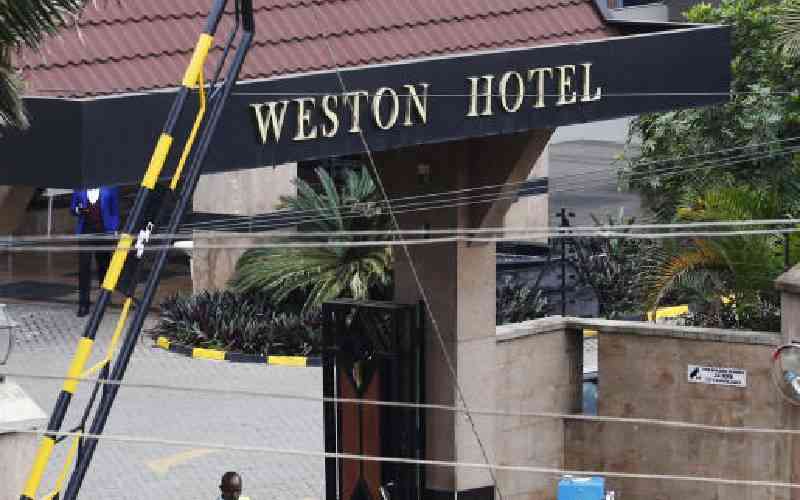On Monday, Nairobians woke up to new changes to traffic flow along many roads, making their morning ride anything but smooth.
Despite numerous efforts by the Nairobi county government to notify the people about the impending changes, Nairobians still attempted to drive, half asleep in the morning, following the old directions.
What this essentially means is that the gains that we could have registered by having traffic on Mombasa move without having to criss-cross with other cars seeking to cross the highway was greatly eroded leaving Mombasa Road looking like a giant snakelike car yard.
While as it appears like traffic flowed on some roads such as Lang’ata Road going towards Nyayo Stadium and Thika Road going into town, the same cannot be said of the poor souls who live in Embakasi, South C, Mlolongo, Syokimau, Kitengela and Athi River.
Anybody who was on Mombasa Road during the morning rush hour got stuck in traffic.
A friend spent three hours to move from South C to Upper Hill, a distance of about five kilometres. That is close to 40 minutes for every one kilometre! Even the oil sheikhs would find this as an expensive ride.
A colleague who was coming from Western Kenya told me that they had formed three lanes coming into town, and that was on Easter Monday in the afternoon. Those were the warning signs.
So what happened? We had come to believe that the roundabouts were the major cause of traffic jams along Uhuru Highway because they choked all the roads in the CBD.
Could we have missed this one by the mile?
Personally, I thought I had this roundabout thing figured out. The removal of roundabouts and banning of right turns was meant to ensure that traffic on Uhuru Highway, Waiyaki Way and by extension Mombasa Road proceeded into town without being blocked by traffic coming from the left.
Similarly, as long as the Langata Road-bound vehicles were to use the flyover at South C, it appeared as if traffic on Mombasa road (it ends at Nyayo roundabout) and onto Uhuru highway would flow flawlessly.
Save for those from Lang’ata Road and some sections of Ngong Road, the rest of the Nairobians clocked an average of three hours to their workstations.
Unperturbed by this scenario, the mandarins who came up with this idea have vowed the measures will eventually sort out the gridlock.
They blame Nairobi’s motorists of not only being slow in learning new things but downright ignorant.
They maintain that there was enough public awareness about the new routes but few bothered to listen. Instead, they chose to look for the right route by driving up and down on a cold Tuesday morning.
Stay informed. Subscribe to our newsletter
From the look of things, Nairobians are quite good and innovative at avoiding police dragnets on Friday and Saturday nights than following simple change of route instructions.
A task force on how to decongest Nairobi announced that it will pay close attention to the system, if it fails to work as planned in two weeks, it will revert to the old one.
My crystal ball tells me we will keep moving in circles about the roundabout conundrum.
TWITTER: @tonyngare
 The Standard Group Plc is a
multi-media organization with investments in media platforms spanning newspaper
print operations, television, radio broadcasting, digital and online services. The
Standard Group is recognized as a leading multi-media house in Kenya with a key
influence in matters of national and international interest.
The Standard Group Plc is a
multi-media organization with investments in media platforms spanning newspaper
print operations, television, radio broadcasting, digital and online services. The
Standard Group is recognized as a leading multi-media house in Kenya with a key
influence in matters of national and international interest.
 The Standard Group Plc is a
multi-media organization with investments in media platforms spanning newspaper
print operations, television, radio broadcasting, digital and online services. The
Standard Group is recognized as a leading multi-media house in Kenya with a key
influence in matters of national and international interest.
The Standard Group Plc is a
multi-media organization with investments in media platforms spanning newspaper
print operations, television, radio broadcasting, digital and online services. The
Standard Group is recognized as a leading multi-media house in Kenya with a key
influence in matters of national and international interest.





